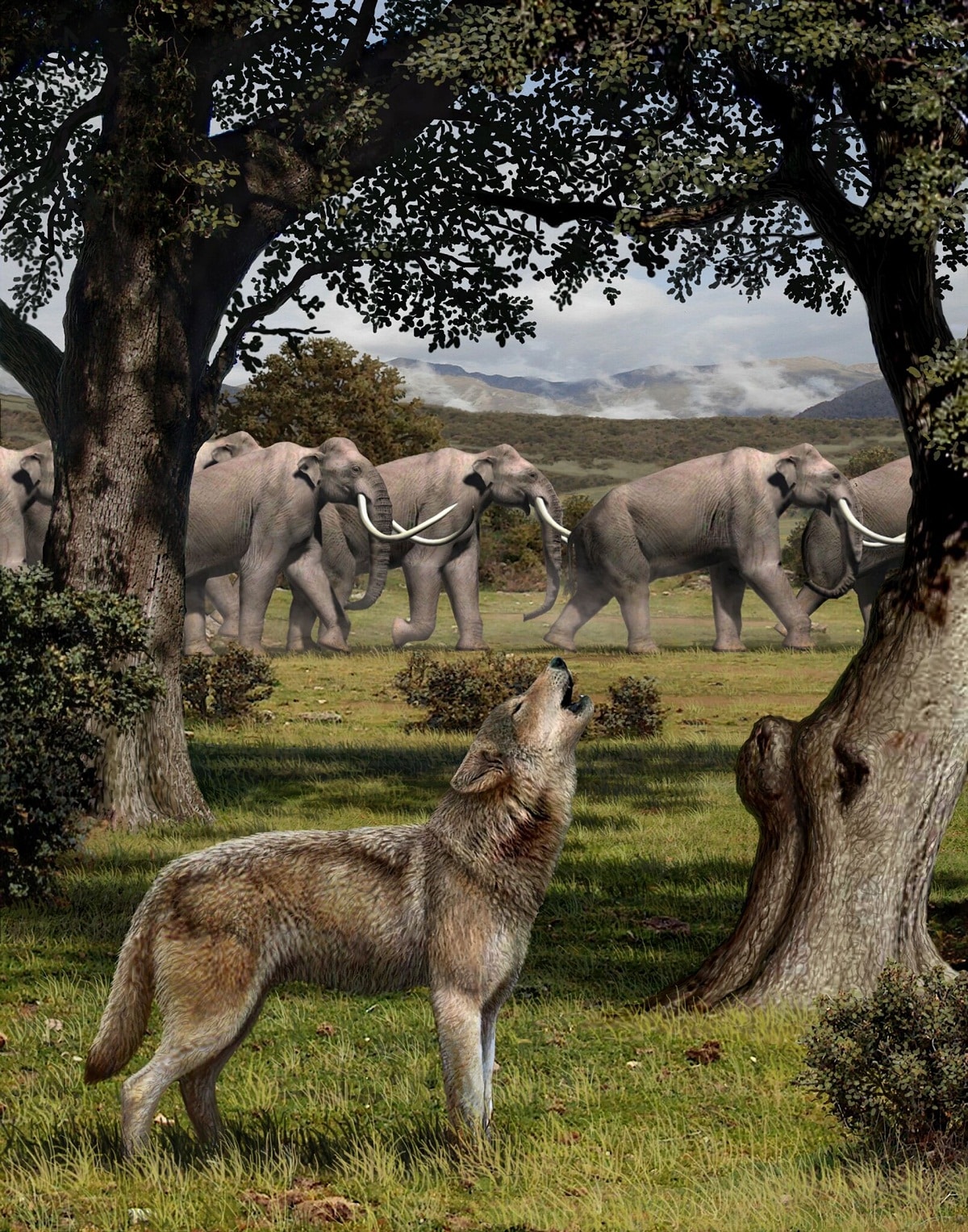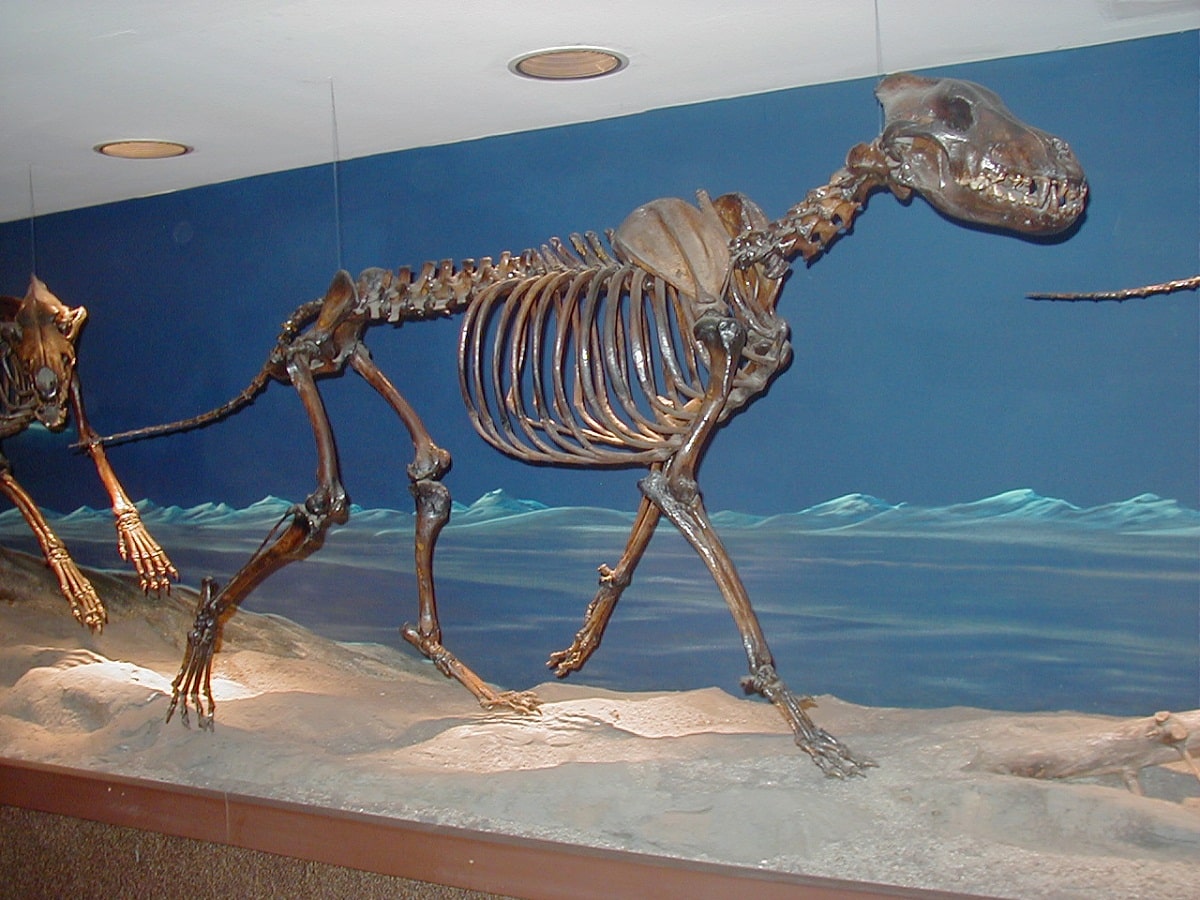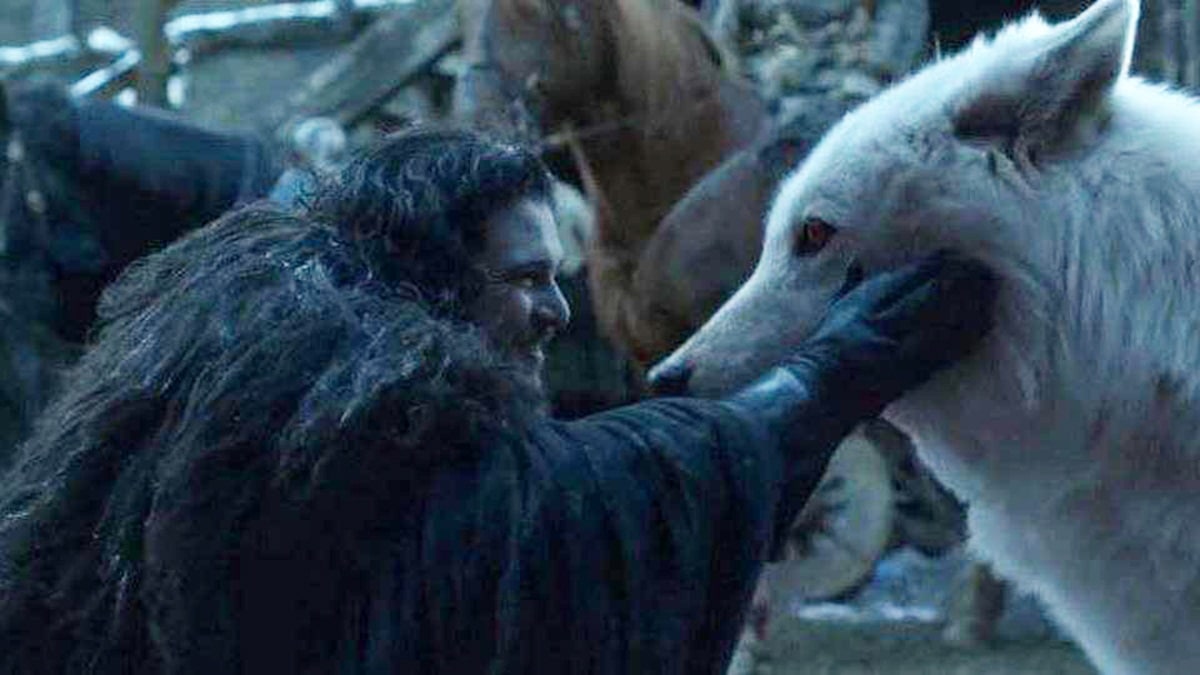
the giant wolf or dire wolf (canis dirus) was a species of canid that occupied the American continent during the late Pleistocene -from North America to the Argentine Pampa- and which became extinct after the last period of ice age approximately 13.000 years ago.
For a long time has become related to the gray wolf or common wolf (canis lupus), with which it coexisted for a long period, but genetic studies today confirm that they are different species that evolved divergently. However, some data on its origin and extinction are not entirely conclusive. Stay with us to immerse yourself in the evolutionary history of this already enigmatic animal that occupied the North American prairies and steppes during the ice age.
The giant wolf: dismantling its relationship with the gray wolf

The most recent genetic studies confirm that the giant wolf and the gray wolf are different species despite the fact that they coexisted for 90.000 years in the same habitat. They share a certain phylogenetic similarity that places them only as "distant cousins". However, to fully understand the evolutionary divergence of both, it is pertinent to carry out a comparative study evaluating their anatomical and genetic similarities and differences.
Giant Wolf Characteristics

Despite what its name suggests, the giant wolf was not exceptionally large compared to its common wolf or gray wolf analogue. Its average weight is around 80 kg, although it has been proven that it could reach up to 100 kg. However, the differences with its distant gray canid neighbor are significant despite the fact that they shared a niche for a long period of time.
Despite having a body size somewhat smaller than gray wolf, canis dirus It has a much heavier and more robust build, with proportionally shorter legs.. Her muzzle was long and her jaws were prodigiously powerful, with strong teeth and sharp fangs capable of breaking the bones of her prey until they were crushed. Findings of fossil remains marked by the jaws of giant wolves support this idea.
Evolutionary history: the giant wolf was a different species from the current gray wolf
Despite their anatomical differences, the similarities they share in terms of the general shape of the body and the coexistence of both for long years, has placed these species as possible closely related relatives, but genetic studies today refute that initial hypothesis.
To learn about their evolutionary history, various scientific teams from around the world have begun rigorous genetic studies that can answer the questions that circulate around the possible relationship of both species.
An early evolutionary divergence

A team of researchers from the University of Queen Mary (London) led by the biologist Laurent Frantz, launched a project of DNA sequencing of five fossil specimens of canis dirus dating from between 50.000 and 12.900 years old. It was the first time that DNA was extracted from dire wolves and the results have been amazing., revealing a complex story about these Ice Age predators and yielding data that disproves old beliefs about these animals and their possible relationship with the gray wolf.
Although dire wolves coexisted with coyotes and gray wolves in North America for at least 10.000 years before they went extinct, the researchers found no data on interbreeding with these species.
The study reveals that dire wolves last shared a common ancestor with living wolf-like species about 5,7 million years ago., and that they were as different from other canid species as coyotes and gray wolves are today, for example: "It was a big surprise to find out that this divergence happened so early" In this regard, says the co-author of the study, Dr. Alice Mouton, from the University of California (Los Angeles).
This early evolutionary divergence of the dire wolf with respect to the gray wolf and other contemporary canids has been one of the great surprises of the study, since it is common for canids to interbreed and this fact points to the hypothesis that there could be a geographical barrier that prevented crossing between populations.
The giant wolf was the last representative of its species

The results of these genetic analyzes also suggest that the giant wolf originated in the Americas, while the ancestors of gray wolves, coyotes, and wolves evolved in Eurasia and colonized North America at a later time. So the researchers say that "The dire wolf was the last representative of a now extinct lineage."
More results extracted in parallel by other research authors corroborate the distinction as a species of the giant wolf with respect to the gray wolf and how the latter was the last survivor of a species that became extinct forever. Thus, Dr. Kieren Mitchell from the Department of Ecology and Evolutionary Biology at the University of Adelaide, in Australia, states that: "Dire wolves are sometimes portrayed as mythical creatures, giant wolves that prowled bleak, frozen landscapes, but the reality turns out to be even more interesting" regarding their specific divergence and extinction, he points out, marking a unique evolutionary history devoid of miscegenation.
And he continues with other interesting conclusions after his research that corroborate the specific differentiation of the giant wolf with respect to the gray wolf and other canids:
"Despite the anatomical similarities between gray wolves and dire wolves, what emerges from this work is that dire wolves and gray wolves could perhaps be related in the same way that modern humans and Neanderthals were in ancient times." the sense in which The dire wolf is the latest member of an ancient lineage, unlike that of all living canids., which has not survived to this day.
"On the contrary, while ancient humans and Neanderthals appear to have interbred, as do modern gray wolves and coyotes, our genetic data provided no evidence that dire wolves interbred with any living canine species. All of our data points to these two wolf species being much more like distant cousins, like humans and chimpanzees."
The cultural imprint that he left us

The giant wolf was an imposing animal that majestically occupied the grasslands of Pleistocene America with an impetuosity equivalent to the lion in the African grasslands where it has been popularly known as the king of the jungle.
The giant wolf remains in the current collective imagination as a great symbol of power and strength, having become a mythical animal that the cinema reproduces, as we can see in the famous series of Game of Thrones or Twilight Saga.